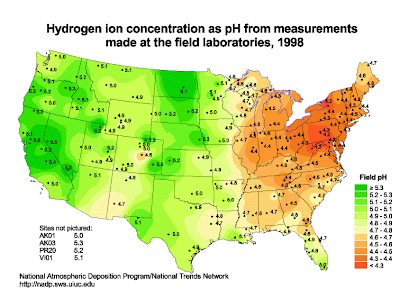The types of maps:
It is important to have scales, compass, and a key on your maps.
Chloropleth: maps that use different colors to differentiate between areas of various distinctions. It may be used to show the amount of rainfall in certain areas, or the types of climate as shown in the image to the right. The many uses of chloropleth maps are useful for weather forecasts, population, or anything that needs to show a difference between 2 or more locations.
Dot density: typically used for population of a specific variable, such as the poor or those who use solar power in their homes. The placement of the dots within the boundaries of each state or country is irrelevant, because it is calculating the total for the total area.
Proportional Symbol: marker is related to size of value.
For example, it can also be used for population. They
are especially designed to show a particular theme
connected with a specific geographic area.
Isopleth:
An isopleth map generalizes and simplifies data with a continuous distribution. It shows the data as a third dimension on a map, thus isopleth maps are more common for mapping surface elevations, amounts of precipitation, atmospheric pressure, and numerous other measurements that can be viewed statistically as a third dimension.
The third dimension is shown by a series of lines called isopleths which connect points of equal value. The isopleth interval is the difference in value between two adjacent isopleths. Note, the values of the isopleths drawn on the map are ALWAYS multiples of the interval. Isopleths never cross or divide and always form enclosed circles, however, this occurrence may not be in the mapped area.
Source: http://www.aegis.jsu.edu/mhill/phygeogone/isoplth.html

Topographic/bathometric: these maps denote height or depth, such as mountainous regions and the various levels of steepness. The lines help show the shape of the land, and the values show how drastically the height has changed.



No comments:
Post a Comment